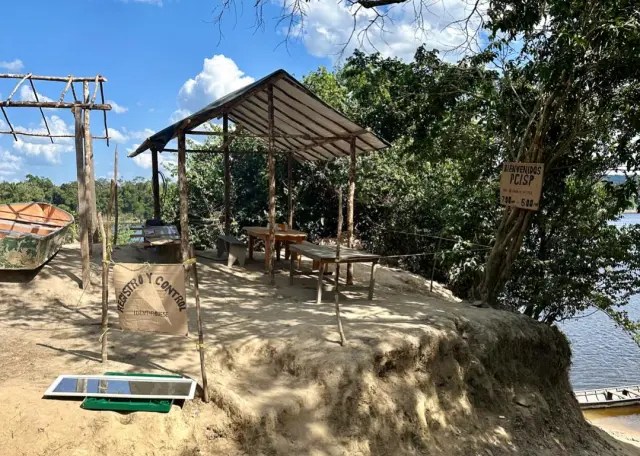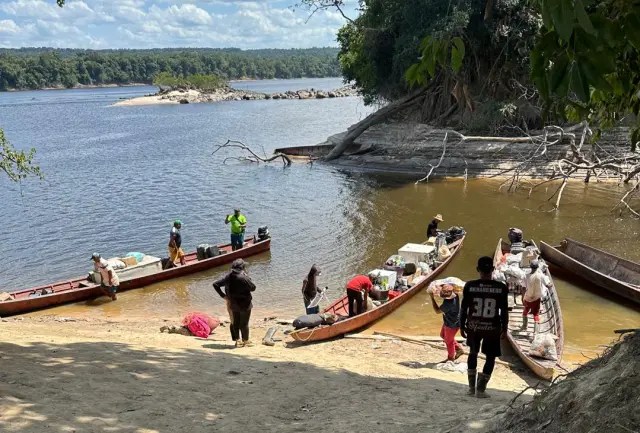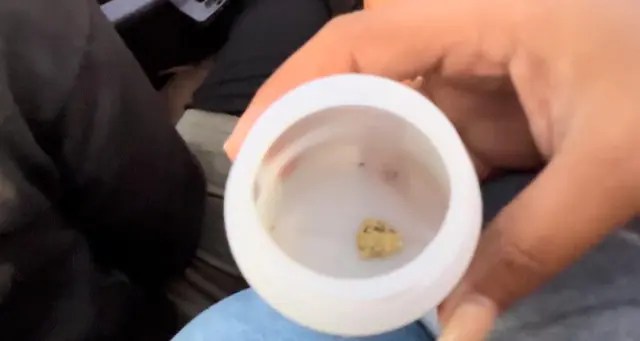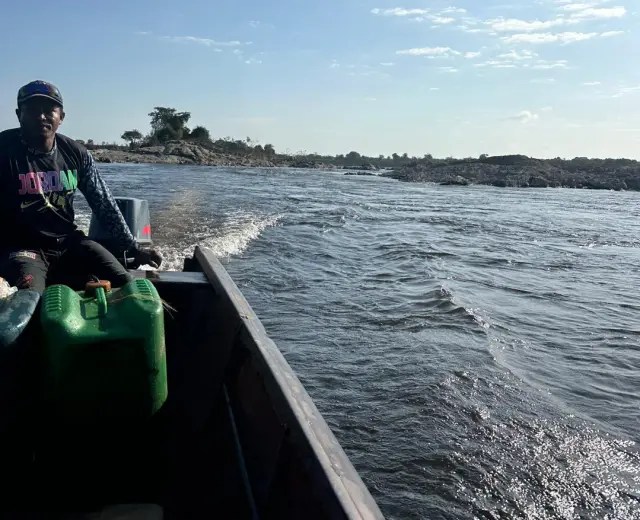
She looks to the sides before answering. She lowers her voice, because she knows that someone could hear her and that would cause problems. “In front of you was one of those who belongs to the ‘system’. Here, whoever you see with a radio belongs to that group, but you can’t talk much about those people and you have to be careful about who you ask,” warned a woman whose name is being withheld for safety.
Pableysa Ostos / Correspondent lapatilla.com
She was referring to the ‘El Ciego’ gang, led by Reiniero Alberto Murgueytio Bastardo, and Nelson, nicknamed “El Caracas.” The group operates and controls the La Paragua sector, Angostura Municipality, and areas of Ciudad Bolívar in southern Venezuela.
Reinero belonged to the gang of Wilmer José Brizuela aka ‘Wilmito’, who was a prisoner of the Vista Hermosa Judicial Confinement Center, in Ciudad Bolívar, capital of Bolívar State. After leaving prison, he formed a gang which has been operating in the area for more than 5 years.
After spending three days in La Paragua, we observed that people began to talk about another group that also operates in the area, but this time led by “indigenous security.” The name they repeat is that of the ‘indigenous captain’ Andrés Solis.
According to what relatives of miners reported, people waited a month to get a permit to work as a ‘palero’ (artisanal miner) at the ‘Bulla Loca’ mine. Presumably for this transaction they charged one gram of gold, that is, 1,900 bolivars (about $51). “Those who lived here slept in their houses waiting (for the permit), but those who were not slept in the square, starving because they had nowhere to stay, and they took over the square.”
The Bulla Loca mine has been in operation for a year. “The lowering of the river (water level) affects the closest mines and prevents them from working, that’s why people rush to that one (Bulla Loca),” said a resident of La Paragua.
A mine worker spoke with the La Patilla reporting team and explained the system that is applied in the mining area where the landslide occurred that according to official sources, left 16 dead after being buried, but unofficially according to testimonies from survivors and relatives of miners, the death toll exceeds 30 people.
“In Uraima, all control is enforced by the El Ciego gang, while in Bulla Loca there was a negotiation between that gang and the ‘indigenous security’ (a group of the local Pemón tribe), which is just as armed as any other gang. They let them bring in their people (the indigenous people from El Ciego gang) to help control the place, but they had recently reached an agreement after a meeting to give them remain a few months to remove their cut and leave,” the worker said.
What is indigenous control like?

“Here you even pay to breathe,” was the phrase the worker used to refer to the weekly and monthly payments they must make. About 90 merchants work there, according to witnesses, who must pay weekly one gram of gold or ‘grama’, which is the term used in the mines, which is equivalent to 4 grams of gold per month, that is, 7,600 bolivars (about 210 dollars per month).
To that they add 5 gold points (950 bolivars equivalent to 26.34 dollars) for everything that is “cold” that is brought in, that is, what needs to be refrigerated. “Even if it’s just a chicken or half a kilo of meat, you have to pay those 5 ‘grama’ points.” While the companions or workers in the business pay one gram of gold per month per person.
For example, a merchant pays $210 per month, plus $26.34 per month for a single food item that requires refrigeration, plus two employees (each pays $52.68). In total, a business could be paying at least $341.7 per month to operate within the mine.
And if they are peddlers, they must pay 5 weekly points (950 bolivars – 26.34 dollars).
Sources reveal that the members of the band of ‘El Ciego’ en Bulla Loca also collect their weekly fee, but “they are more understanding. If you explain them that you had a bad week and that you don’t have the money to pay for the ‘vacuna’ (vaccine, protection money), they understand you, but the indigenous people don’t. With them you pay or you pay.”
The gold extracted from Bulla Loca is ‘green’, that is, of lower quality. In La Paragua they price it at $38 per gram, while yellow gold is worth more: $50.
Restrictions

After what happened in the pit, the complications to obtain fuel in these areas became evident. In the town of La Paragua, 70 liters of fuel cost 120 U.S. dollars, that means a liter costs 50 bolivars (1.38 U.S. dollars) and the only ones authorized to market it within the mine are the indigenous people.
In the case of Bulla Loca, to bring in a 70-liter tank of fuel, you must “pay” 3 liters to the indigenous security, so that they authorize the entry. “Even if the gasoline is for your business plant, you must get ‘off the mule’ (pay) with those liters.”
It is prohibited to drink alcoholic beverages in Bulla Loca. “People drink, but hidden, because if indigenous security discovers you, they will fine you. When they have their parties they do drink, they play music.”
Other things they must pay for are their entry and exit from the area. At the port of Bulla Loca, someone representing indigenous security approaches to verify that people paid one gram of gold to be able to leave and one gram of gold is paid again to enter.
He revealed that they have stipulated types of contracts for each worker according to the tasks they are going to perform. For example, if you enter as a merchant, you cannot go in the mine as a palero (artisanal miner). If they find you performing other functions that do not correspond to your contract, you are sanctioned for 6 months.
Check Point

Before entering the mine there is the “La Y” (Letter Y, bifurcation) checkpoint. In this place, indigenous security representatives carry out searches to make sure that nothing “illegal” is entering the work camp.
“Cell phones are prohibited. People put get them in, but very quiet and even bring them walking through the trail. That unfortunate day of misfortune, an indigenous person took a photo before the pt collapsed on the few people who were there working, but there are none of the event itself. The videos that have circulated are after everything happened.”
After what happened, control measures intensified and even more so because the military arrived in the area. People fear that they will close the mine for the paleros, which would generate unemployment, in a group of people not only from Bolívar State, but also from other states.
The miners interviewed confess that many of the people who are entering the mine do not have experience in this type of job, but out of necessity they enter unknown lands, without measuring the risks of being a miner under a network of gangs that control the activity and that in the end, are the masters of the area where the law of the strongest prevails.

